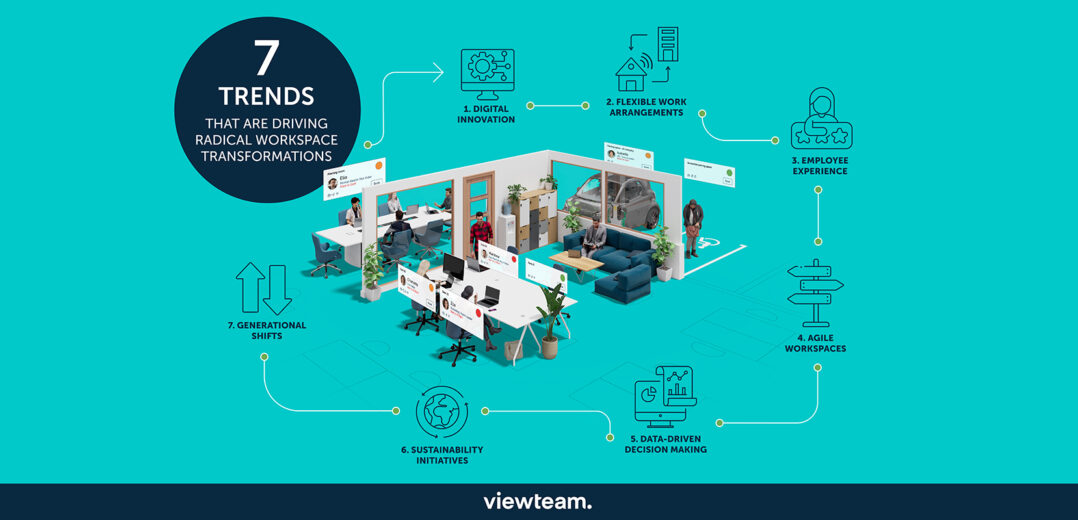
With technology advancing at breakneck speed and employee expectations evolving, the traditional office setup is undergoing an unconventional makeover. Here at Viewteam we’ve delved into the drivers behind this workspace transformation and how they’re reshaping the way we work.
1. Digital innovation
Technology is at the forefront of workplace transformation, revolutionising how we communicate, collaborate, and conduct business. From cloud-based desk-booking software tools to AI-driven analytics, organisations are harnessing the power of digital innovation to streamline processes and boost efficiency.
2. Flexible work arrangements
The rise of flexible work arrangements, including remote work, hybrid workspaces and flexible scheduling, is driving a shift in how and where work gets done. Employees are demanding more flexibility in their work schedules, prompting organisations to rethink office setups and embrace remote-friendly policies.
3. Employee experience
As the battle for talent intensifies, greater emphasis is being placed on enhancing the employee experience. From ergonomic workspaces to wellness programs, organisations are investing in initiatives that prioritise employee well-being and satisfaction, driving workplace transformation.
4. Agile workspaces
Gone are the days of static office layouts. Agile, adaptable workspaces are becoming increasingly popular, with organisations embracing flexible layouts that can easily adapt to the changing needs of employees and teams. From hot-desking to modular furniture, agile workspaces promote collaboration and creativity.
5. Data-driven decision making
In the age of big data, organisations are leveraging data analytics to drive decision-making across all aspects of the business, including workspace design and management. By analysing workspace utilisation data, organisations can optimise space usage and create more productive work environments.
6. Sustainability initiatives
With concerns about climate change and environmental sustainability, organisations are incorporating sustainability initiatives into their workplace transformations. From energy-efficient buildings to eco-friendly office supplies, sustainability is becoming a driver of workspace design and management.
7. Generational shifts
Multi-generational workforces, including baby boomers, millennials, and Generation Z, bring diverse expectations around workspaces and work arrangements. Successful companies are adapting to these varying preferences by providing a mix of workplace options, embracing digital technologies, and fostering a culture that values work-life balance and individual preferences.
These trends are transforming the traditional office setup, helping to reshape work environments to be more flexible, inclusive, and future-ready. By understanding and adapting to these drivers of workspace transformation, organisations can stay ahead of the curve, creating productive and employee-centric workspaces that meet the evolving needs of the workforce.
Find out how Viewteam can help you adapt to the changing nature of workspaces and deliver a better employee experience.